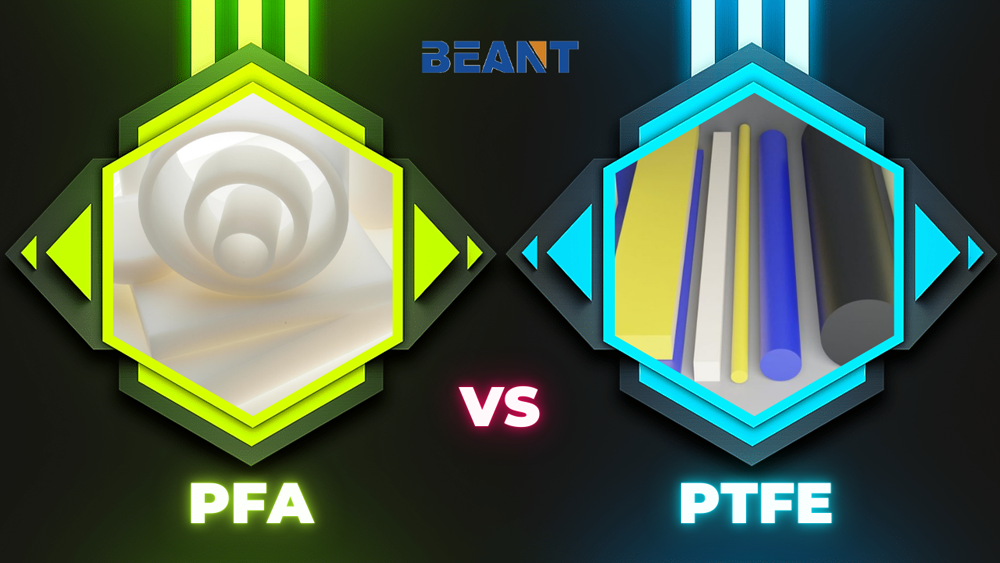
Lined pipes are critical components in industries where the transport of corrosive fluids demands materials that offer superior chemical resistance and durability. Among the various options available, PFA (Perfluoroalkoxy) and PTFE (Polytetrafluoroethylene) lined pipes are highly regarded for their exceptional properties and versatility in handling a wide range of industrial applications. This article explores the distinct characteristics of PFA and PTFE lined pipes, including their chemical compositions, manufacturing processes, applications, performance comparisons, and cost considerations.
Lined pipes play a vital role in industries such as chemical processing, pharmaceuticals, and food production, where the conveyance of corrosive substances requires materials that prevent contamination and ensure operational safety. PFA and PTFE are both fluoropolymer materials renowned for their inertness and resistance to chemicals, making them ideal choices for lining pipes used in critical applications.
PTFE is a synthetic fluoropolymer consisting of carbon and fluorine atoms arranged in a tetrafluoroethylene (CF2=CF2) structure. This unique molecular arrangement provides PTFE with exceptional chemical resistance, including resistance to acids, bases, and solvents. PTFE is inert to most chemicals due to its highly stable carbon-fluorine bonds, making it suitable for handling aggressive substances across a wide temperature range (-200°C to +260°C).
In addition to its chemical resistance, PTFE exhibits excellent electrical insulation properties and a low coefficient of friction, which is beneficial in applications where non-stick properties and minimal friction are critical.
PFA is structurally similar to PTFE but contains perfluoroalkoxy groups (-O-CF2CF(CF3)-O-), which impart flexibility and lower permeability compared to PTFE. This structural difference allows PFA to exhibit enhanced flexibility, making it easier to process and mold into complex shapes compared to PTFE.
Like PTFE, PFA offers exceptional resistance to chemicals, including acids, bases, and solvents. It also maintains its properties across a wide temperature range (-200°C to +260°C), though it generally exhibits better resistance to stress cracking and creep due to its greater flexibility.
Chemical Resistance:
Both PFA and PTFE offer outstanding resistance to a wide range of chemicals, including acids, bases, and solvents. PTFE may have a slight edge in inertness due to its molecular structure, but PFA's flexibility and lower permeability can make it more suitable for applications where stress cracking or permeation resistance is critical.
| Property | PTFE Lined Pipes | PFA Lined Pipes |
| Chemical Resistance | Excellent resistance to acids, bases, solvents | Similar chemical resistance as PTFE |
| Temperature Range | -200°C to +260°C | -200°C to +260°C |
| Flexibility | Less flexible compared to PFA | More flexible, better resistance to stress cracking |
| Permeability | Lower permeability | Slightly lower than PTFE, better in some applications |
| Manufacturing Complexity | Higher due to material properties | Lower, easier to process and mold |
| Applications | Chemical processing, food, pharmaceuticals | Semiconductor, electronics, biotechnology |
Temperature Range:
Both materials can operate within a broad temperature range (-200°C to +260°C), making them suitable for extreme temperature environments encountered in industrial settings. PTFE's higher thermal stability and low coefficient of friction are advantageous in high-temperature applications, while PFA's flexibility can offer better resistance to thermal cycling and mechanical stresses.
Durability and Maintenance:
PTFE's inertness and low friction coefficient contribute to its durability and ease of maintenance. PFA's flexibility enhances its resistance to mechanical stresses, potentially extending its service life in applications prone to vibrations or thermal expansion.
Both PFA and PTFE lined pipes are manufactured using a process known as paste extrusion. This process involves mixing the fluoropolymer resin with a lubricant and extruding it onto the inner surface of a metallic pipe substrate. The coated pipe is then sintered at high temperatures to bond the lining securely to the metal substrate, ensuring a strong, seamless integration that prevents delamination or detachment during operation.
Quality control measures during the manufacturing process are crucial to maintaining the integrity of the lined pipes. Inspections typically include checks for uniform thickness of the lining, absence of defects such as bubbles or voids, and adherence to dimensional specifications to ensure compatibility with fittings and connections.
PTFE lined pipes find extensive use in industries where high chemical resistance and thermal stability are essential. These include chemical processing plants, pharmaceutical manufacturing facilities, and food processing industries. The non-stick properties of PTFE also make it suitable for conveying materials prone to adhesion or buildup, such as viscous liquids or slurries.
PFA lined pipes are preferred in industries requiring flexibility and lower permeability along with excellent chemical resistance. Semiconductor manufacturing, electronics production, and biotechnology sectors benefit from PFA's ability to withstand aggressive chemicals while maintaining integrity under varying temperatures and pressures. PFA's flexibility allows it to conform to bends and curves more easily than PTFE, making it suitable for applications involving intricate piping systems.
Cost factors for PFA and PTFE lined pipes include material costs, manufacturing complexity, and installation requirements. PTFE may have a higher initial cost due to its more specialized manufacturing process and higher material cost. However, its long-term durability and minimal maintenance needs often justify the initial investment in industries where downtime and operational disruptions are costly.
PFA's lower permeability and flexibility can contribute to lower maintenance costs over time, although its initial cost may be comparable or slightly lower than PTFE depending on specific application requirements.
In conclusion, the choice between PFA and PTFE lined pipes depends on specific application requirements such as chemical compatibility, temperature range, flexibility, and long-term durability. PTFE offers unparalleled chemical resistance and thermal stability, making it ideal for demanding applications in harsh environments. Conversely, PFA's flexibility and lower permeability provide advantages in applications requiring resistance to stress cracking or enhanced flexibility. Understanding these distinctions allows industries to select the most suitable lined pipe solution that aligns with their operational needs and performance expectations.
Feel free to leave your message on our board. If you're looking to inquire about prices or place an order, this is the right place! Let us know the details of your needs, and our team will get back to you with a personalized quote as quickly as possible. We're here to ensure your experience is seamless and satisfactory. Share your requirements or ask any questions you might have - we're eager to assist and look forward to doing business with you!
Name:Tim
Phone:+86-15716151880
Email:[email protected]
Company:BEANT
Address:No. 28, Luoshen Road, Luoshe Town, Huishan District, Wuxi City, Jiangsu Province
